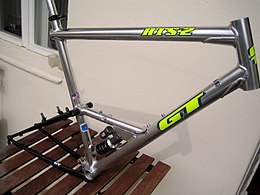
Back سبائك الألومنيوم Arabic Aliatge d'alumini Catalan Slitiny hliníku Czech Aluminiumlegierung German Aleaciones de aluminio Spanish آلیاژهای آلومینیوم Persian Alumiiniseokset Finnish Alliage d'aluminium French Aliaxes de aluminio Galician סגסוגת אלומיניום HE

An aluminium alloy (UK/IUPAC) or aluminum alloy (NA; see spelling differences) is an alloy in which aluminium (Al) is the predominant metal. The typical alloying elements are copper, magnesium, manganese, silicon, tin, nickel and zinc. There are two principal classifications, namely casting alloys and wrought alloys, both of which are further subdivided into the categories heat-treatable and non-heat-treatable. About 85% of aluminium is used for wrought products, for example rolled plate, foils and extrusions. Cast aluminium alloys yield cost-effective products due to the low melting point, although they generally have lower tensile strengths than wrought alloys. The most important cast aluminium alloy system is Al–Si, where the high levels of silicon (4–13%) contribute to give good casting characteristics. Aluminium alloys are widely used in engineering structures and components where light weight or corrosion resistance is required.[1]
Alloys composed mostly of aluminium have been very important in aerospace manufacturing since the introduction of metal-skinned aircraft. Aluminium–magnesium alloys are both lighter than other aluminium alloys and much less flammable than other alloys that contain a very high percentage of magnesium.[2]
Aluminium alloy surfaces will develop a white, protective layer of aluminium oxide if left unprotected by anodizing and/or correct painting procedures. In a wet environment, galvanic corrosion can occur when an aluminium alloy is placed in electrical contact with other metals with more positive corrosion potentials than aluminium, and an electrolyte is present that allows ion exchange. Also referred to as dissimilar-metal corrosion, this process can occur as exfoliation or as intergranular corrosion. Aluminium alloys can be improperly heat treated, causing internal element separation which corrodes the metal from the inside out.[citation needed]
Aluminium alloy compositions are registered with The Aluminum Association. Many organizations publish more specific standards for the manufacture of aluminium alloy, including the SAE International standards organization, specifically its aerospace standards subgroups,[3] and ASTM International.
- ^ I. J. Polmear, Light Alloys, Arnold, 1995
- ^ Hombergsmeier, Elke (2007). "Magnesium for Aerospace Applications" (PDF). Archived from the original (PDF) on 6 September 2015. Retrieved 1 December 2012.
- ^ SAE aluminium specifications list, accessed 8 October 2006. Also SAE Aerospace Council Archived 27 September 2006 at the Wayback Machine, accessed 8 October 2006.